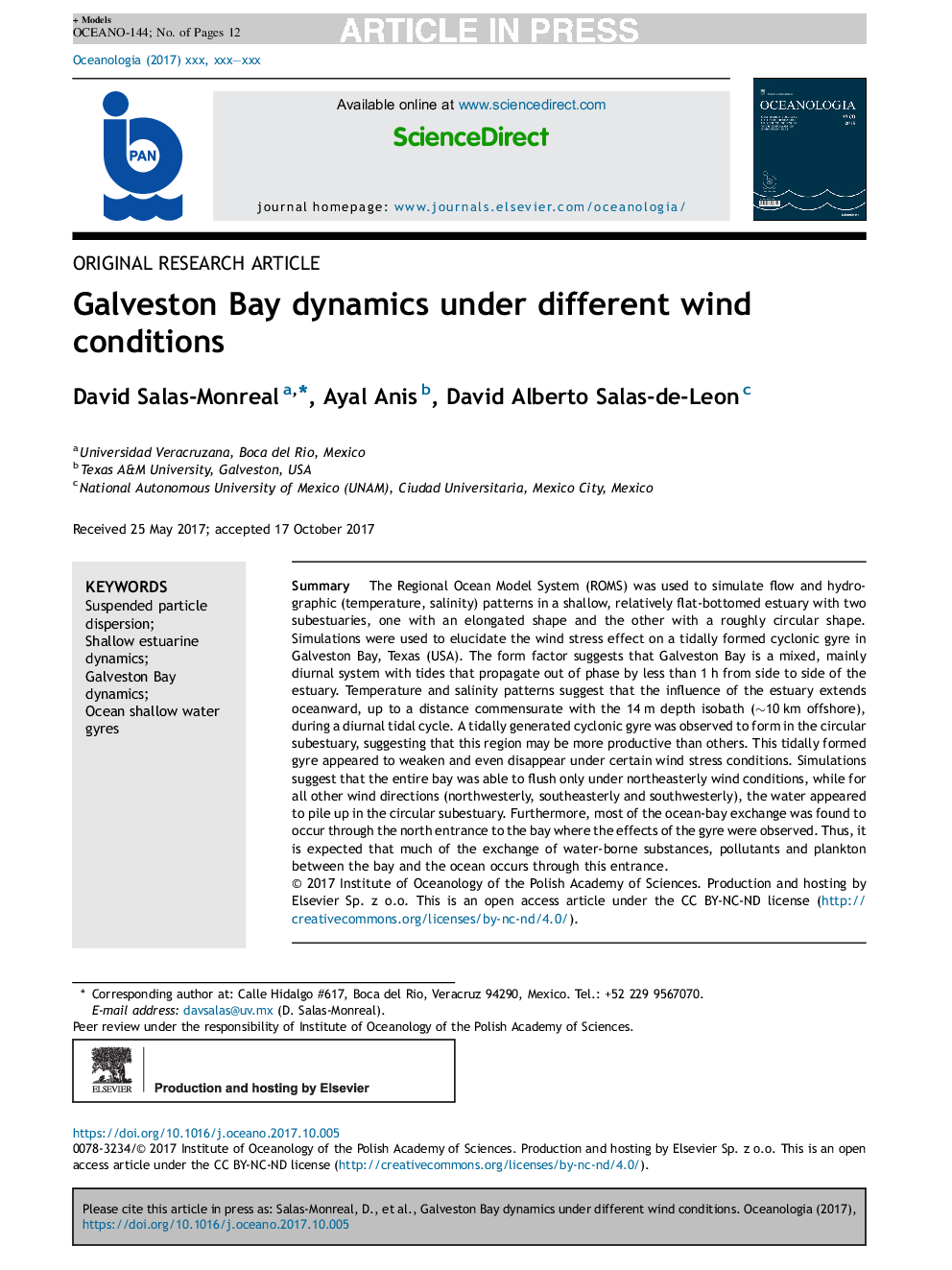| Article ID | Journal | Published Year | Pages | File Type |
|---|---|---|---|---|
| 8399854 | Oceanologia | 2018 | 12 Pages |
Abstract
The Regional Ocean Model System (ROMS) was used to simulate flow and hydrographic (temperature, salinity) patterns in a shallow, relatively flat-bottomed estuary with two subestuaries, one with an elongated shape and the other with a roughly circular shape. Simulations were used to elucidate the wind stress effect on a tidally formed cyclonic gyre in Galveston Bay, Texas (USA). The form factor suggests that Galveston Bay is a mixed, mainly diurnal system with tides that propagate out of phase by less than 1Â h from side to side of the estuary. Temperature and salinity patterns suggest that the influence of the estuary extends oceanward, up to a distance commensurate with the 14Â m depth isobath (â¼10Â km offshore), during a diurnal tidal cycle. A tidally generated cyclonic gyre was observed to form in the circular subestuary, suggesting that this region may be more productive than others. This tidally formed gyre appeared to weaken and even disappear under certain wind stress conditions. Simulations suggest that the entire bay was able to flush only under northeasterly wind conditions, while for all other wind directions (northwesterly, southeasterly and southwesterly), the water appeared to pile up in the circular subestuary. Furthermore, most of the ocean-bay exchange was found to occur through the north entrance to the bay where the effects of the gyre were observed. Thus, it is expected that much of the exchange of water-borne substances, pollutants and plankton between the bay and the ocean occurs through this entrance.
Related Topics
Physical Sciences and Engineering
Earth and Planetary Sciences
Oceanography
Authors
David Salas-Monreal, Ayal Anis, David Alberto Salas-de-Leon,
